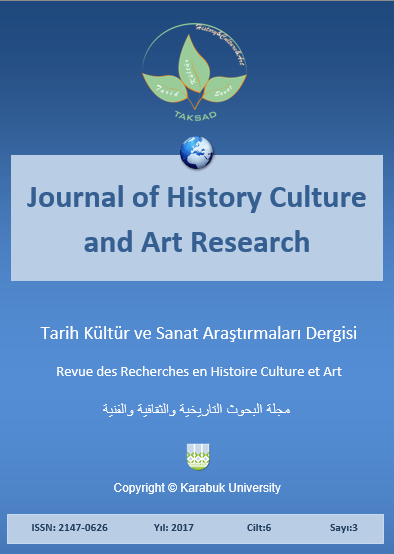Western Architecture during the First Pahlavi Dynasty and Its Effects on the Lifestyle of Iranian Women
DOI:
https://doi.org/10.7596/taksad.v6i3.1011Keywords:
Western architecture, Pahlavi dynasty, Women, Lifestyle, Iran.Abstract
This study investigates the effects of modern western architecture on the culture and lifestyle of Iranian women during the first Pahlavi dynasty. For this purpose, the problem is confronted with a historical look. The widespread relationship of Iran with western countries during modern times has influenced Iranian architecture as well as other cultural areas. Thus, during this period, the traditional lifestyle and the culture of Iranian women have dramatically resembled a western style. However, this change has led to some paradoxes because of incongruency of Iranian culture and the Islamic traditions with western culture in some cases in Iran. This dissonance has become more apparent during the recent decades and criticized by many intellectuals. The changes of this period shows that some places such as Tehran University, squares, schools, streets and others are not simply a place for studying, shopping, or entertainment any more, but they are a place for public movement and protests of women and men.
References
Abrahamian, Yervand (2005). Iran between two revolutions. Tehran: Markaz publication.
Ansari, Maryam (2009). Low Heights (Tehran’s non-indigenous architecture). Journal of Hamshahri Intellect, 35, 21-26.
Bani Masoud, Amir (2011). Iran’s modern architecture. Vol 4. Tehran: Honar Meemari Qarn Publication.
Behashti, Seyed Mohammad (2011). Constitution and survival of Iranian culture. Shargh Newspaper. August.
Bemanian, Mohammadreza (2006). The effective factors on formation of architecture and urbanism in the first dynasty of Pahlavi. Journal of Semiannual Art, 1, 34-50.
Daniel, Victor (2003). Nikolous Markov’s Architecture. Tehran: Did Publication.
Dashti, Farzane & Abtahi, Seyed Mostaffa (2010). Modernization in the first Pahlavi era. Journal of Development Strategy, 21, 18-31.
Habibi, Seyed Mohsen (2005). From village to city. Tehran: Tehran University Publication.
Homayoun Katouzian, Mohammad Ali (2010). State and society in Iran. Tehran: Markaz Publication.
Hossein Yazdi, Maryam (2013). Pahlavi era architecture. Anthropology and Culture Site. Special eighth anniversary of anthropology and culture.
Jaberimoghaddam, Morteza Hadi (2005). City and Modernity. Tehran: Farhangestane Honar Publication.
Kamali, Mohammadreza (2009). Qajar’s Architecture. Bi-annual Journal of Restoration Science and Cultural Heritage, 4-5, 53-61.
Lux, Arman & Narsisianus, Emilia (2009). Iranian-Armenian community’s role in the emergence of modern architecture in Tehran. Journal of Iranian social studies, 6, 72-89.
Mahdizade, Javad (2002). The renewal era and the emergence of Tehran metropolis. Journal of Urbanism Query, 3, 20-34.
Mollayee Tavani, Alireza (2007). Introduction to Research Methodology in History. Tehran: Ney publication.
Noorbakgsh, Hedye (2007). Arenas and municipal organizations in Tehran in constitution age. Journal of Paradise of Art, 9, 11-23.
Sediq, Esa (1977). Iran’s revival at the time of great Reza Shah. Journal of Vahid, 230, 50-57.
Sohrabi, Narsis & Rabani, Rasool (2007). Pahlavi Era Architecture. Journal of Fine Arts, 31, 32-44.
Yazdani, Marziye (1998). The history of education in Iran. Journal of Treasure of Documents, 31, 57-70.
Zarkash, Afsane (2009). The impact of government agents in the architecture of private buildings in the first dynasty of Pahlavi. Journal of Monthly Art Book, 136, 25-37.
Downloads
How to Cite
Issue
Section
License
All papers licensed under Creative Commons 4.0 CC-BY.- Share — copy and redistribute the material in any medium or format
- Adapt — remix, transform, and build upon the material for any purpose, even commercially.
Under the following terms:
Attribution — You must give appropriate credit, provide a link to the license, and indicate if changes were made. You may do so in any reasonable manner, but not in any way that suggests the licensor endorses you or your use.
- No additional restrictions — You may not apply legal terms or technological measures that legally restrict others from doing anything the license permits.







